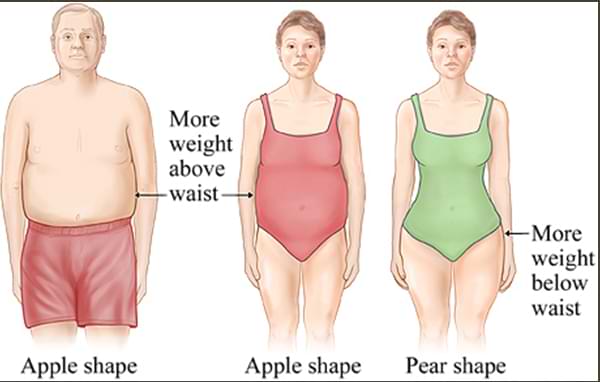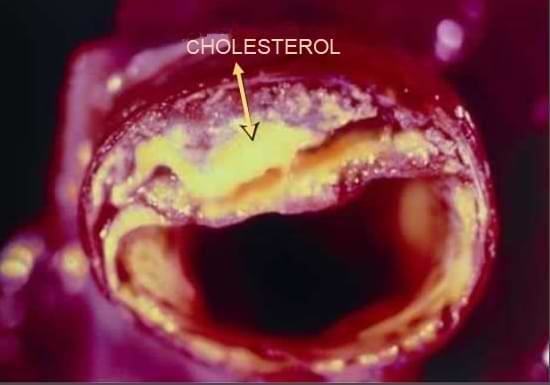WHAT CAUSES FAT TO ACCUMULATE AROUND THE BELLY AND HOW TO GET RID OF IT
Being overweight not only causes physical discomfort but also psychological distress.
From feeling insecure, and lacking confidence to feeling like everyone is judging you based on your weight.
Been there and I know what exactly it means to carry extra pounds particularly around your mid section.
From uncomfortable movements, never looking good in outfits, to low self esteem and most dangerously, being at an increased risk of developing a number health complications.
The vast majority of fat individuals become over weight without being mindful of the contributing factors or how to get rid of the extra pounds.
These are some of the issues this article will address.
First, reducing weight is painfully arduous especially if you are not aware of the causes of the fat build up.
Once you get to grips with the causes of too much fat buildup , finding a solution becomes quite easier though I have to mention that your patience will be the key to winning this battle because one thing for certain is, the stubborn stomach fat won’t vanish completely in a week or two.
Getting yourself in shape is a step by step process.
It’s wise to study your enemy before combat so let’s start by briefly examining what this stubborn stomach fat is, where it comes from and why it accumulates around our bellies.
what is stomach fat and why does it build up around our bellies ?
Beneath your skin, are different areas where fat can accumulate hence, body fat is categorized based on the locale of accumulation.
subcutaneous fat
The pinch you make on the skin.
Subcutaneous fat lies just below the skin and an excess of it will yield a flabby appearance.

Men tend to store excesses of this fat in their abdomen, chest, and shoulders resulting in an apple -shaped appearance, while some women will store the excesses in their hips and thighs resulting in a pear-shape appearance.
Intramuscular fat
Found within your skeletal muscles.
visceral (intra-abdominal fat )
This is your main enemy and the type of fat that will be extensively discussed.
Visceral fat covers the entire abdomen including the hips and it’s partly responsible for increased waist line and of-course the pot belly.
It is the fat that is stored deeper underneath the skin after the subcutaneous fat.
It accumulates around and between your abdominal organs (stomach, intestines, liver, pancreas and gal bladder) and it is what mainly contributes to belly fat.
It also accumulates around other organs including the liver and most dangerously, the heart.
https://tinyurl.com/4rzcp3uh
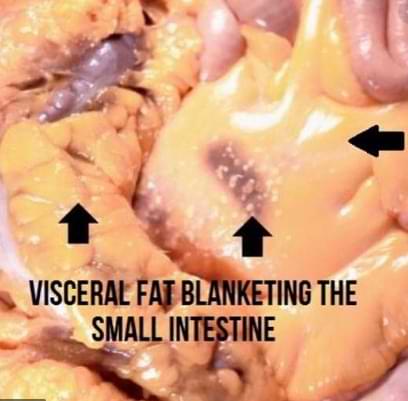
Where does visceral fat come from?
Energy conservation is critical for the survival of species.
Hence, to maintain body weight during times of feasting ( plenty of available food) and famine (lack of food) , both humans and animals evolved complex mechanisms to regulate energy intake and expenditure.
This is achieved by promoting the storage of extra calories obtained from food in form of fat during periods of feast to survive during periods of famine.
in other words, your body can continue functioning normally without eating for a couple of days, thanks to your fat reservoir.
The body utilizes the stored fat as energy source when nothing is consumed to provide calories for energy.
However, with the recent abrupt change in environmental conditions in which processed food is readily available and in which there is little need for physical activity, what was an asset during evolution has become a liability in the current ‘obesogenic’ environment .[1]
Thus, the fat accumulation is due to excess energy intake (in form of food) and low energy expenditure (in form of physical activity).
If you have a pot belly and a large waist, that’s one of the clear signs that you’re storing this very dangerous visceral fat.
How is Belly Fat Measured and What is considered deadly belly fat ?
Using measuring tape
According to health experts at Johns Hopkins school of medicine, if you are overweight, make sure you take measurements for your waist size.
This can be accomplished using a measuring tape.
Simply circle the tape around your belly.
Make sure that you take measurements while breathing out and relaxed.

Central obesity, or excessive belly fat, is defined as more than 35 inches (88 cm) for women and more than 40 inches (102 cm) for men.
Though any waist size over 31.5 inches (80 cm) for women and over 37 inches (94 cm) for men is considered too risky for future health complications.
https://tinyurl.com/3cyh77sn
Why should you be concerned by this belly fat build up anyway ?
1. It increases risk of a number of heart complications.
Heart related complications are the leading cause of deaths among the obese and humans in general.
Fat is normally stored in fat cells known as adipocytes.
These fat cells are found in many parts of the body like muscles , but they are particularly concentrated in the abdominal region.
If the fat is not burned for energy, it is continually stored mainly around the abdominal region.
In the face of persistent obesogenic stress and limited capacity or room for regional adipocyte (fat storage cells) , fat storage is forced into ectopic regions in and around specific organs or of the body.
Ectopic fat is fat that accumulates in or around specific organs, and body compartments like the neck, the liver, kidney, muscle, and most dangerously around the heart.
Fat accumulation around the heart has been found to contribute to heart disease .
Fat depots in the liver or muscle tissue can increase cardiovascular risk by affecting lipid and glucose metabolism, particularly when accompanied by inflammation.
Fat around the heart vessels and arteries may exert its harmful effects on the heart and blood vessels by direct chronic elevation of circulating fatty acids, which can reach to toxic levels within non-adipose tissues sometimes leading to death ( lipotoxicity) .
https://tinyurl.com/4pnfux8j
Fat around the heart is a metabolically active organ, releasing proteins that may trigger the fibrosis that causes irregular heart beats or rhythms( Atrial fibrillation – A -fib).
A-fib can interrupt the normal flow of blood.
This interruption means that the condition puts you at risk of blood clots and stroke.
Epicardial fat (fat around the heart) also increases risk of heart failure. [2]
2.It increases risk of various cancers
According to a 2006 report by the International Agency for Research on Cancer (IARC), after analyzing more than 1000 epidemiological studies, there was sufficient evidence linking obesity to 13 types of cancers.
They include; 1. Esophagus 2. Gastric cardia 3. Colon and rectum 4. Liver 5. Gallbladder 6. Pancreas 7.Breast 8. Corpus uteri 9. Ovary 10. Kidney 11. Meningioma 12. Thyroid 13. Multiple myeloma.
https://tinyurl.com/3wak3p7k
According to the 2017 Michigan state university study, visceral fat releases fibroblast growth factor-2 protein ( FGF2) that potentially causes non-cancerous cells to turn into cancerous ones.
FGF2 stimulates certain cells that are already vulnerable to the protein and causes them to grow into tumors.
3. it impairs cognition
Research on the biology of fat has shown that there are several types of adipose fat (fat stored for energy).
Belly fat, also known as visceral fat, is the most damaging type.
It surrounds organs, causes the belly to balloon and releases molecules that can penetrate and interact with the brain.
According to the journal of clinical investigation, too much fat around the belly enables easy, excessive access for the proinflammatory protein signal interleukin-1 beta.
The signal that is generated in visceral fat is released into the blood then crosses the blood brain barrier and into the brain where it over -activates microglia (the resident immune cells in our brain) and impairs cognition.
https://tinyurl.com/ywhczx2j
This partly explains why studies link obesity to a decline in cognitive function both in children and the elderly.
4. Increases LDL ( low-density lipoproteins) cholesterol synthesis
What is Cholesterol?
Cholesterol is a type of lipid/ fat that can either be manufactured by the body or obtained from diet.
It plays a significant function in our bodies like its integral role in membrane fluidity (the freedom of movement of protein and lipid constituents within the cell membrane).
Cholesterol also serves as a precursor ( substance from which another is formed) for the manufacture of steroid hormones including estrogen, progesterone, testosterone, as well as vitamin D.
Since fat isn’t water soluble, cholesterol can’t be absorbed in the body without the aid of lipoproteins hence, Cholesterol moves throughout your body while inside lipoproteins.
This means that lipoprotein particles are made of both proteins and fat.
https://tinyurl.com/4x9mrht6
The different types
VLDL – very-Low-Density Lipoprotein
Made by the liver and released into the bloodstream.
The VLDL particles mainly carry triglycerides to fat cells (located in areas like abdominal cavity, muscles and around internal organs like your heart) to be used as energy source.
Triglyceridesare fat made by the body from unused calories.
Hence, consuming more calories from carbohydrates, or sugars, than you burn can lead to excessive amounts of triglycerides and high levels of VLDL in your blood.
Some of the VLDL is cleared from the blood. The removal of triglycerides from VLDL results in the formation of VLDL remnants which later become LDL.
Having a high triglyceride level can increase your risk of heart disease.
LDL – Low– Density Lipoprotein.
LDL is a product of VLDL metabolism.
LDL particles are responsible for transporting cholesterol to nearby tissues.
When cholesterol levels increase in your body, LDL levels increase.
Cholesterol is either synthesized in the body (the liver or extra-hepatic tissue) or obtained from food.
When cholesterol from diet say eggs or meat increases, the body responds by synthesizing less cholesterol to keep cholesterol levels in check but still, consumption of cholesterol dense foods should be limited.
https://tinyurl.com/4x9mrht6
If LDL levels increase due to increase in cholesterol levels, LDL particles can settle or collect in the blood vessel hollow passage way through which blood flows. A plaque may form and narrow the blood vessels.
This limits the flow of oxygen-rich blood to your organs and other parts of your body a condition known as atherosclerosis.
It also leads to stroke, heart attack and chest pain.
That’s why LDL is normally referred to as the bad cholesterol.
HDL – High-Density Lipoprotein
HDL plays a major role in reverse cholesterol transportation that is; it removes excess LDL cholesterol from the the peripheral blood vessels, and transports it back to the liver for bile acid synthesis, and steroid synthesis or for disposal of cholesterol ring via bile.
It also has several other beneficial biological properties, which enhance its protective effect against cardiovascular disease.
That’s why it is normally referred to as the good cholesterol.
5. Increases risk of type 2 diabetes
It is suggested that high free fatty acids levels can trigger insulin resistance, particularly by promoting gluconeogenesis. (The process of making glucose in the liver or kidney)
Why or How does Fat easily Build up around the Stomach ?
There are a number of reasons for this including;
1. Genes
A recent study published in Human Molecular Genetics book has indicated that five genes may play a role in determining your waist to hip ratio.
Two genes in women seem to determine the waist to hip ratio.
One of them is found in fat tissue and specifically interacting with 17 proteins that are known to exist in obese people.
The new study is the first to link this gene specifically to visceral fat.
2.Age
During our middle years, we tend to accumulate more fat which to a great degree contributes to the total body weight especially among women.
More pounds find their way around the waist.
In fact, even women who don’t actually gain weight may still gain inches at the mid section.
According to research conducted at Karolinska Institute in Sweden, as we get older, the rate at which lipid (or fat) in the fat cells is removed and stored declines.
The age-related decrease in fat oxidation is related to a reduction in both the quantity and capacity of muscles to utilize oxygen to burn fat.
https://tinyurl.com/ycknmku9
Hence, older individuals who either don’t eat less or regularly exercise, easily gain weight.
3. Diet (Foods hat cause stomach fat)
Some of the foods we eat increase the accumulation of visceral fat thus leading to an increase in stomach fat.
They include;
1. Refined Grains
Foods manufactured with refined flour such as cookies, white rice, white flour, white pastries and pasta can result in fat build up around the belly.
Refined grains get a longer shelf life but during refining, the dietary fiber is removed there by increasing the Glycemic value or Index.
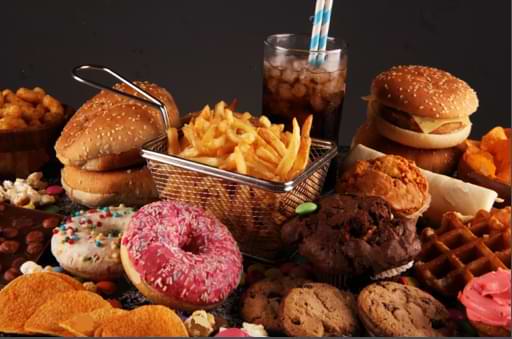
The Glycemic Index(GI) is a relative ranking of the carbohydrate in foods depending on their effect on blood glucose levels (insulin).
It’s the fiber that reduces the glycemic value or index of whole grain foods like brown rice and whole wheat products like whole wheat bread.
Carbohydrates with a low Glycemic Index value of no greater than 55 are slowly digested, metabolized and absorbed thus leading to a lower and slower rise in blood glucose levels.
https://tinyurl.com/2py7suzb
2. Foods containing trans fats
Artificially, trans fats may be created when oil goes through a process called hydrogenation which makes the oil more solid.
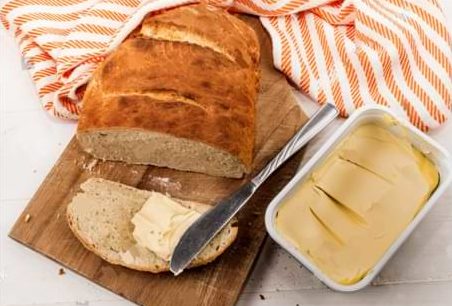
This type of fat, known as hydrogenated fat can be used for frying or as an ingredient in processed foods like biscuits as well as other fats like some margarines.
Trans fats can also be found naturally in some foods at low levels, such as those from animals, including meat and dairy products.
Consuming a diet high in trans fats can lead to accumulation of belly fat and high cholesterol levels in the blood which may lead to health complications such as heart disease, attacks and strokes.
A study conducted for 6 years at Wake Forest University School of Medicine, USA with the aim of establishing if a trans fat diet led to central obesity in male African green monkeys found that monkeys that ate foods containing trans fatty acids had a lot more fat deposited around the abdomen leading to pot bellies.
https://tinyurl.com/2cn7kdv6
3. Alcohol
Alcohol drinking in light-to-moderate amounts has been associated with reduced coronary heart disease risk.
However, Whether or not you will gain weight from alcohol is a function of your body type, your lifestyle, what alcohol you drink, how often, how much you drink and what you eat when you drink.
For instance, one study in both men and women established that folks taking a maximum of one drink everyday developed less fat around the waist than those taking a number of drinks once in a while.
According to the journal of clinical and experimental research on alcoholism, alcohol not only stops fat burning (fat oxidation) it leads to the body making new fat in the liver (lipogenesis). Alcohol metabolites like Acetate interfere with and stop peripheral fat mobilization in your body which means you can’t utilize your fat reservoir as energy source for example.
In other words, when you consume alcohol your liver entirely focuses on metabolizing alcohol and its contents or metabolites and it stops executing other functions like burning fat.
To make it even worse, alcohol metabolites make it harder for your body to access and or utilize the stored fat for energy.
https://tinyurl.com/ypj5baew
Secondly, Alcohol is manufactured after the fermentation of sugars from foods like grapes, other fruit, vegetables, and grains.
The sugars and or carbohydrates then become alcohol which becomes a concentrated form of energy measured as kilojoules or Calories.
Each gram of alcohol has 29 kilojoules or 7 Calories hence the bigger or more concentrated the drink is, the higher the number of calories.
https://tinyurl.com/yckka24u
Like earlier mentioned, any calories that aren’t utilized by the body as energy source are stored as fat.
4. Sugar and Sugar Sweetened Beverages
Sugar sweetened beverages like soda, some sports drinks, and fruit drinks either contain sweeteners like sucrose (which is table sugar), glucose and fructose(which is sugar mainly found in fruits and honey).
Or fruit juice concentrates that are added to the beverage by manufacturers.
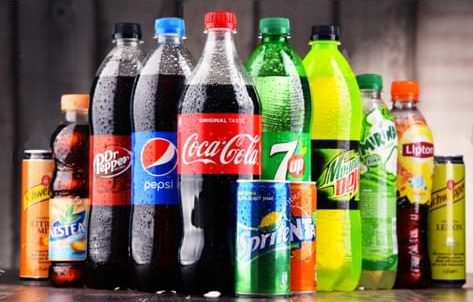
First, sugar-sweetened-beverages contain too many liquid calories just like sugar itself.
https://tinyurl.com/5y9kueuh
Second, such drinks contain a lot of rapidly absorbable sugars, which increase insulin responses.
Too much insulin in the body triggers insulin resistance.
Elevated insulin levels also promote fat storage which leads to fat gain.
https://tinyurl.com/yckwyr7y
A systematic review in children and adults was carried out to evaluate the impact of Sugar sweetened beverages on body weight gain.
15 studies involving 25,745 children and adolescents found a positive association between Sugar sweetened beverages consumption and weight gain.
Among adults, an increase in daily serving per day of Sugar sweetened beverages was associated with an additional weight gain of 0.22 kg over a one year period.
https://tinyurl.com/2s3ph55b
Another study that aimed to compare sweetened soft drinks to milk with the same calories as the sweetened soft drinks and a non caloric soft drink on changes in total fat mass and abnormal fat deposition in both the liver and muscle tissue, established that after 6 months of daily consumption of the sweetened soft drinks, there as an increase in fat accumulation around the muscles and liver compared to milk, the non caloric soft drink and water consumption.
Drinking regular cola resulted in a higher relative amount of visceral fat than did the other drinks.
https://tinyurl.com/bdhybx7r
How to lose Belly Fat fast ?
1. Burning more calories than you consume.
This of course doesn’t mean that you are free to eat whatever you feel like as long as you can burn off the extra calories through exercise.
People underestimate how much exercise they have to do to burn off fat.
In fact, Studies consistently indicate that people do not lose much weight if they just try to exercise.
Researcher Alexxai Kravitz explained three main components to energy expenditure that is;
1) Basal metabolic rate, or the energy used for basic functioning when the body is at rest;
2) The energy used to break down food; and
3) The energy used in physical activity.
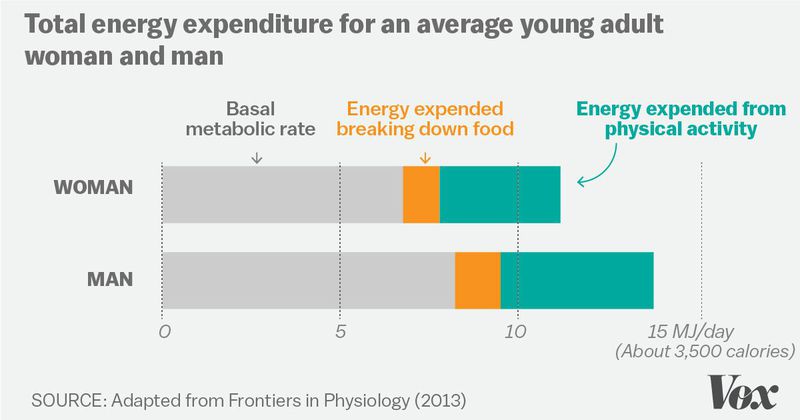
Basal metabolic rate (BMR) is the rate of energy expenditure per unit time at rest.
This means that even when you’re sitting on your butt, you burn some energy.
https://tinyurl.com/2p8kwvcz
According to Alexxai, out of the total energy out put for majority of folks, the percentage of energy expended through BMR is anywhere between sixty and eighty yet we are not in charge of this energy out put.
The remaining 10 – 30 percent of energy is spent through physical activity, yet exercise is just part of other physical activities (Remember, physical activity includes all movement, including walking around, fidgeting, et cetera).
So, look at it this way; the foods you eat account for 100 percent of the energy which gets into your body out of which only 10 to 30 percent is spent through exercise.
That’s a pretty big disparity which makes it a lot harder to get rid of all your dietary contraventions through gym workouts than advocates for gym memberships make it seem.
So what should you do instead?
Diet differently period! Dieting is a better way to lose weight than exercise.
The main challenge with diets is that you feel deprived, and that’s why people find it almost impossible to stick to them.
https://tinyurl.com/55vu36z8
Dr Michael Mosley, the physician and presenter of the BBC series Trust Me, I’m a Doctor who popularized the 5:2 diet ; suggested that if you can’t restrict yourself to small amounts or special kinds of food in order to lose weight, then eat differently instead.
He recommends the favored and scientifically supported Mediterranean diet.
With the high fat and nutritious Mediterranean diet, you switch things around without eating less.
For instance, replacing the junk foods with saturated fat filled oily fish is a good idea.
So is Exercise a waste of time?
Exercise might not be the most effective way to lose fat, but there’re a number of benefits of exercising.
Exercise improves mood, it reduces the risk of heart disease, if you already lost weight then you will avoid building more weight through exercise, and it helps to increase blood flow around the body.
Dr. Mosley adds that when majority of folks decide to exercise, they focus on aerobic exercise like brisk walking, swimming, and jogging but ignore the equally important resistance exercises like weight lifting or push ups.
2. Intermittent Fasting – The secret weapon
In layman’s terms, intermittent fasting is regularly restricting food/ calorie intake for a given time (normally 12 – 24 hours) during the day.
In regards to weight loss, animal studies have demonstrated that fasting for less than 12 hours is not effective so it should be at least 12 hours.
If this energy isn’t used, fat accumulates and we become fat over time.
When you fast, first you reduce your daily or weekly calorie in take provided you don’t snack during the day.
This is particularly effective if you are physically active during the time you fast.
There are three common ways of fasting intermittently and these include ;
1. The alternate day fasting
where you can fast one day or for 24 hours without eating anything besides taking water then eat whatever you want the day after.
For instance, fasting from the time you have dinner which is normally 5 – 7 PM to any where between 9 am and 11 am the next day.
When 40 studies were reviewed, it was established that intermittent fasting is effective for weight loss, typically responsible for between 7 to 11 pounds every 10 weeks.
https://tinyurl.com/2mbuhbzu
So, you can choose the fasting option that is more convenient for you depending or your weight loss requirements and time schedule.
I personally used I still use time restricted fasting to keep my weight in check though I have to mention that if your last meal is later than 8 PM then you may have to skip breakfast the next day.
3. Using coconut oil
According to The Coconut Ketogenic diet book by doctor Bruce Fyfe, coconut oil not only helps a person slim down, but it promotes the burning of visceral fat—the type that causes our belly to balloon.
When a study that aimed to investigate the effects of dietary coconut oil on the biochemical, size and proportional profiles of women with abdominal obesity was conducted, it was established that you can get rid of belly fat by adding a couple of tablespoons of coconut oil into your diet if you’re obese.
The visceral fat starts melting off and the belly to shrink [3] .
4. High Intensity Intermittent Exercises
Studies show that High-intensity intermittent exercising (HIIE) can easily burn off subcutaneous and abdominal body fat than any other physical activity.
One good example of HIIE is sprinting which is elucidated below.
5. Sprinting regimen to reduce belly fat.
This involves repeatedly sprinting at top speed then relaxing by performing an exercise at low intensity like walking or even resting immediately after the high- intensity sprinting.
For instance, the Wingate test which is the most preferred sprint regimen entails 30 seconds of full scale sprints with a hard resistance proceeded by low intensity exercise or rest.
The winget test is normally executed four to six times with a 4 minutes rest for recovery in between.
The sprints are done within three to four minutes before resting and the sprint sessions are done thrice a week for six weeks.
However, this procedure may not be suitable for majority of over weight individuals who intend to lose fat because of it’s extreme demands.
The alternative protocol for such individuals is sprint cycling for 8 – seconds then cycling for 12 seconds at reduced intensity for 20 minutes.
6. Use Apple cider vinegar
It was recently discovered that acetic acid which is the main component of vinegar prevents body fat from accumulating.
During the 12-week treatment period of obese individuals, 3 groups were orally administered with a 500ml beverage containing 15ml of vinegar, 30ml of vinegar and no vinegar at all .
visceral fat , the body mass index, weight, blood fat and waist size were a lot less among the two groups who ingested the beverage that contained vinegar compared to the group that took the beverage without any vinegar.
AUTHOR BIO
As a short guy who was psychologically distressed almost everyday due to the challenges he faced in life accountable to his height, Dennis Raney (Bsc.) finally somehow found a way to overcome this adversity by naturally increasing his height with lifestyle and healthy changes.
He has been researching this topic for over a decade and practically applying the knowledge so he decided to share his wealth of information about the topic of increasing height both during and after puberty in the book and on this blog.
Feel free to connect with him for a conversation:
Email: Dennis »»
Facebook: Connect »»
NEXT : how to grow taller after puberty complete guide.
Please Share if you Like this…..Thanks!

